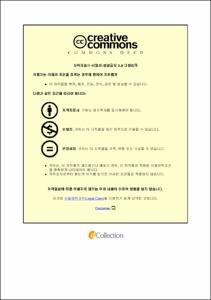Comparison of static and microfluidic culture methods of human liver organoids
- Abstract
- The liver is a critical organ in xenobiotic toxicity which has its unique metabolism with a variety of metabolic enzymes. Since hepatotoxicity is one of the major causes of drug withdrawal, predicting whether a certain compound has a hepatotoxic potential in the early stage of drug development is highly significant. Among in vitro system, three-dimensional (3D) culture shows improved hepatic functions and maintains its originalities longer has been widely investigated. We attempted to culture human bipotent liver progenitor cells-derived liver organoid with on a microfluidic device with minimal fabrication procedures. The organoid culture was performed in two different conditions static condition for at least 11 days of differentiation and microfluidic culture for 5 days. Secreted albumin level was higher in the fluidic condition only after 5 days of differentiation. In the differentiation period, mRNA expression level of Lgr5 decreased in a similar degree in both conditions, while that of albumin increased in a higher level in the microfluidic system. Activities of cytochrome P450 1A2 and 3A4 were higher in the microfluidic system both in natural and induced condition. In conclusion, the microfluidic condition could make organoids differentiate in a shorter time with higher hepatic functions. |간은 다양한 대사 효소에 의한 외부 물질의 대사가 활발히 일어나는 기관으로, 간독성은 약물을 철수하게 되는 주요 원인 중 하나이다. 개발 단계에서 진행하는 사람으로부터 유래한 간세포를 이용하는 in vitro 실험은, 기존의 2차원적 배양이 아닌 3차원적 배양을 통해 세포가 더 생체와 가까운 구조를 갖게 함으로써 더 실제와 유사한 정보를 얻을 수 있도록 개발되고 있다. 한편, 정적인 환경의 세포 배양보다 배지가 흐르게 하는 유체 환경에서의 배양이 더 생체를 모방하는 것으로 알려져 있다. 본 연구에서는 사람의 간 조직의 담관 줄기세포에서 유래한 3차원 오가노이드를 두가지 방법으로 배양하여, 각각의 방법에서 자란 오가노이드의 특성을 확인함으로써 기존의 정적 배양과 유체 배양을 비교하고자 하였다.
간 절제술로부터 일부 얻은 환자 또는 공여자의 간 조직을 처리하여 기존 배양법 및 유체 환경에서의 배양을 시도하였다. 오가노이드가 형성되면 일정한 기간 동안 증식한 후, 기존의 정적 배양과 유체 배양에서 각각 11-13일 및 5일의 분화 기간을 거쳤다. 정적 배양의 경우 2일에 한 번씩, 유체 배양의 경우 매일 수집한 배양배지에서 효소면역법(enzyme-linked immunosorbent assay, ELISA)를 이용하여 알부민의 농도를 측정하였고, 파라핀 블록을 제작하여 HNF4α, CYP1A2, CYP3A4, MRP2 등 간세포에서 확인할 수 있는 마커에 대한 면역형광염색(immunofluorescence)을 실시하였다. 증식 및 분화단계에서 lgr5, albumin에 대한 mRNA 발현 정도를 확인하였고, 대사효소 CYP1A2 및 CYP3A4의 활성화 정도를 liquid chromatograph tandem-mass spectrometer (LC-MS/MS)를 이용한 대사체 분석으로 확인하였다.
연구 결과, 정적 배양의 경우에 비해 유체 배양에서 분화일수에 따른 알부민의 증가 양상이 두드러지게 나타났다. 알부민의 mRNA 발현량 또한 유체 환경에서 월등히 높게 나타났다. CYP1A2 및 CYP3A4 효소의 대사 활성은 유체 배양에서 각각 2배 및 4배 가량 높게 나타났다. 결론적으로 더 짧은 기간 동안 분화과정을 거쳤음에도 불구하고 유체 환경에서 배양한 오가노이드가 기존 방식으로 배양한 것보다 더 간과 유사한 기능을 보였다.
- Issued Date
- 2018
- Awarded Date
- 2019-02
- Type
- Dissertation
- Affiliation
- 울산대학교
- Department
- 일반대학원 의학과의과학전공
- Advisor
- 손우찬
- Degree
- Master
- Publisher
- 울산대학교 일반대학원 의학과의과학전공
- Language
- eng
- Rights
- 울산대학교 논문은 저작권에 의해 보호받습니다.
- Appears in Collections:
- Medical Science > 1. Theses (Master)
- 파일 목록
-
-
Download
 200000177110.pdf
기타 데이터 / 1.06 MB / Adobe PDF
200000177110.pdf
기타 데이터 / 1.06 MB / Adobe PDF
-
Items in Repository are protected by copyright, with all rights reserved, unless otherwise indicated.